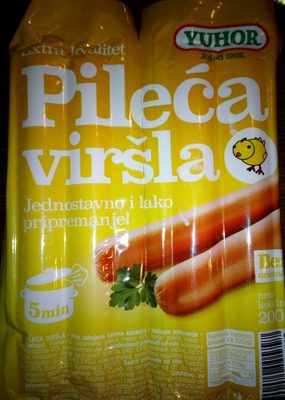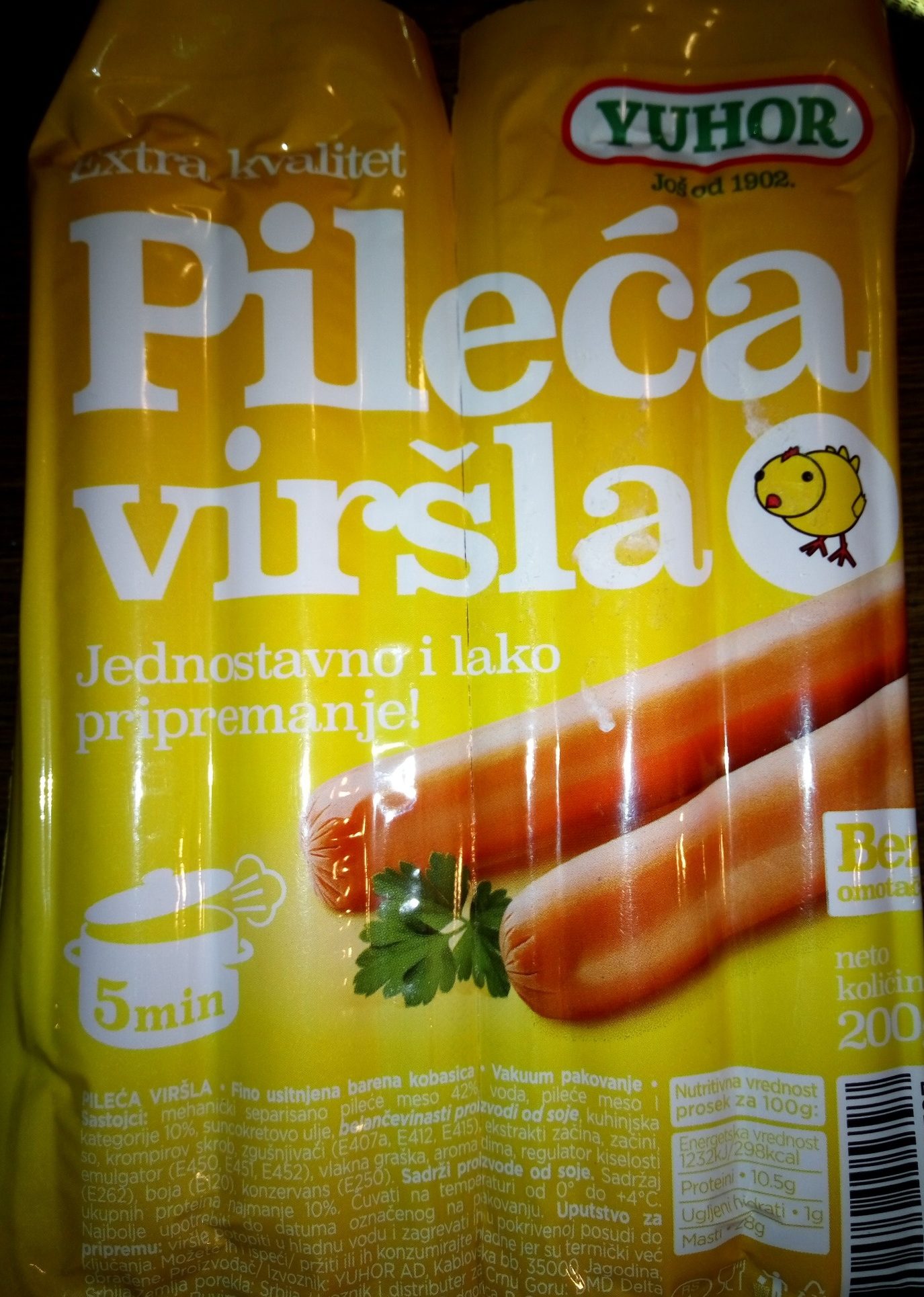Yuhor pileća viršla - 200 g
This product page is not complete. You can help to complete it by editing it and adding more data from the photos we have, or by taking more photos using the app for Android or iPhone/iPad. Thank you!
×
Barcode: 8600084005797 (EAN / EAN-13)
Common name: Fino usitnjena barena kobasica
Quantity: 200 g
Packaging: Plastic
Brands: Yuhor
Categories: Meats and their products, Meats, Prepared meats, Sausages
Manufacturing or processing places: Serbia
Traceability code: RS 01 EC
Link to the product page on the official site of the producer: http://www.yuhor.rs/food/pileca-virsla-2...
Countries where sold: Serbia
Matching with your preferences
Environment
Packaging
Transportation
Report a problem
Data sources
Product added on by bojackhorseman
Last edit of product page on by packbot.
If the data is incomplete or incorrect, you can complete or correct it by editing this page.









